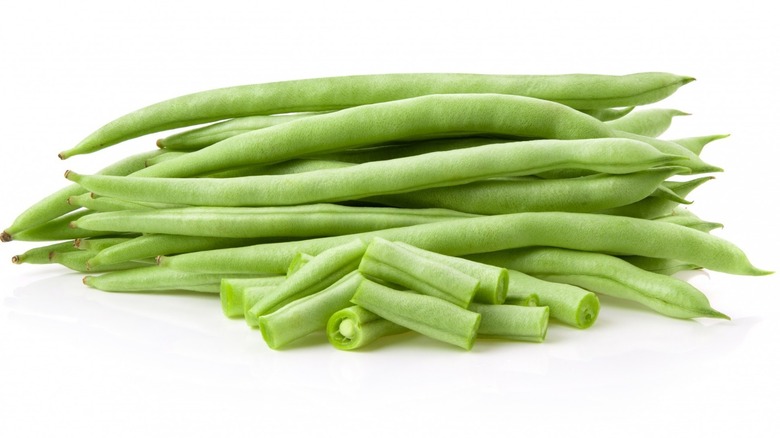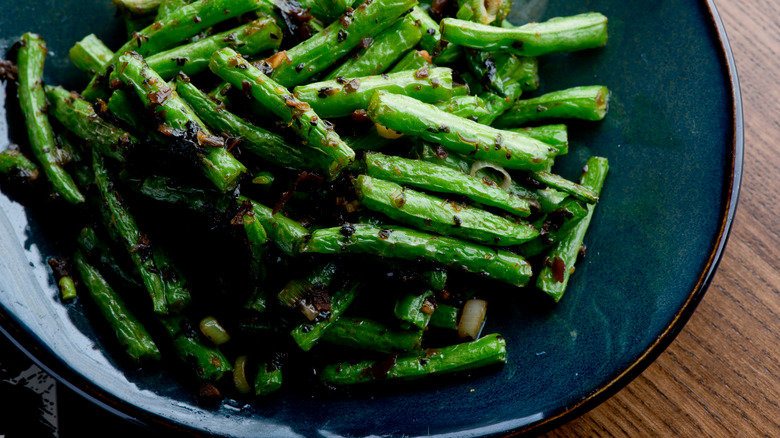Why You Should Be Freezing Your Green Beans Before Cooking Them
A green bean casserole recipe is a quintessential part of the holidays for many Americans, who relish the mixture of tender green beans, creamy sauce, and crispy fried onions to finish it all off. However, while the green beans are a key component of that dish, the add-ins amp up the flavor and serve to disguise any issues with the actual cook of the vegetables. Green beans on their own aren't always as popular a side because it can be tough to cook them to perfection — often, you'll end up with a limp end result that isn't exactly the most appetizing.
Given how small and thin they are, green beans don't take very long to cook — and there are a variety of ways to prepare them. You can steam and sauté them in a pan on the stovetop, you can boil and blanch them, or you can roast them.
However, if you've never tried freezing your green beans before cooking them, you may want to give that technique a try as well. Chef and food writer J. Kenji López-Alt swears by the simple trick, as he told Serious Eats. With green beans, the way you cook them is basically the most important step. And if you're working with limp green beans, no amount of sauce or herbs will transform them into a transcendent side dish. The right technique, on the other hand, is a game-changer.
The new technique you need to try
If you cook green beans and other vegetables by boiling and then blanching them in ice water, you know exactly how helpful ice can be in the cooking process. As Love & Lemons explains, that quick dunk in icy water essentially halts the cooking process, hopefully keeping your green beans at the perfect texture and avoiding transforming them into mush. However, J. Kenji López-Alt's technique allows you to level up your green beans by introducing ice earlier in the process.
As the chef and food writer tells Serious Eats, you'll want to start by freezing the green beans. This transforms the vegetable in a similar way that blanching does, breaking down cells within the beans to help you get that perfect texture. The secret to this technique involves a reversal of the typical process. Rather than cooking and then quick-freezing the beans in icy water, you'll want to freeze the beans, allow them to thaw, and then toss them in a pan to sauté them. According to López-Alt, this simple tweak to the cooking process will leave you with an incredible final product that's bright and crisp, rather than unappealingly soggy.
This technique works well for any vegetable that has a similar long, narrow structure; give it a try with asparagus or snap peas as well.

